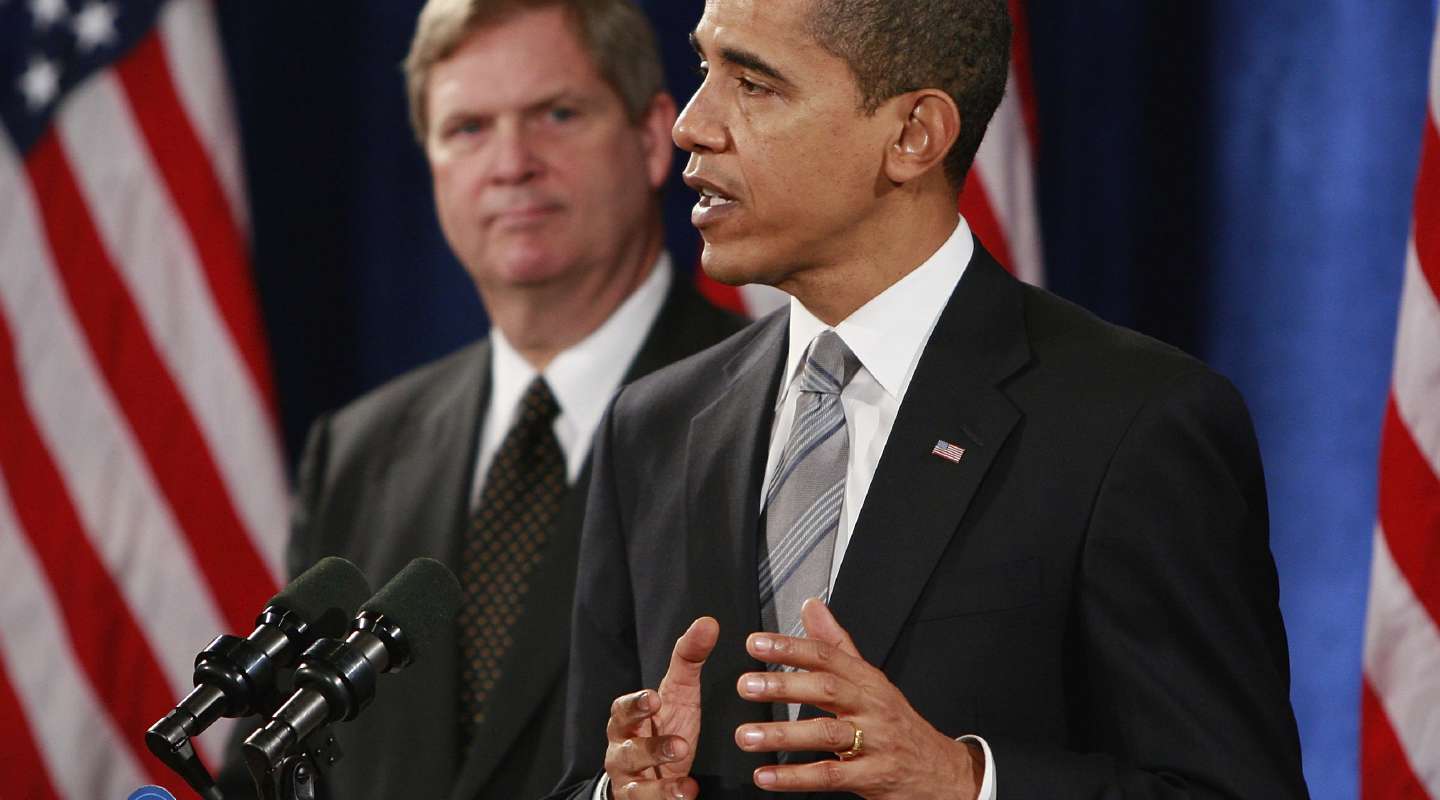
The son of a mother who suffered from alcohol and prescription drug addiction, Agricultural Secretary Tom Vilsack will lead the Obama administration’s fight to end drug abuse in rural America.
President Barack Obama put Agricultural Secretary Tom Vilsack in charge of fighting the heroin and prescription drug epidemic ravaging rural America. The longest-serving member of the president’s cabinet will be in charge of developing policy to combat the opioid problem in areas across the nation.
Combatting the opioid epidemic has been one of the top priorities for the president. It was one of the first things he mentioned during the State of the Union earlier this year.
“I hope we can work together this year on some bipartisan priorities like criminal justice reform, and helping people who are battling prescription drug abuse and heroin abuse,” Obama said during the first minutes of the speech.
Vilsack will focus on the drug issue in addition to increases in suicide rates, declining overall health and rising levels of financial stress among rural Americans. The secretary has chaired the White House Rural Council since 2011.
“The whole point is to have the secretary of agriculture look across the [federal government] to see what unique capabilities agencies have to invest in blowing through these obstacles to opportunity in rural communities,” White House Chief of Staff Denis McDonough told The Washington Post.
Deaths from opioid overdoses, and drug overdoses in general, grew to record numbers in 2014. Opioids caused 61 percent of the 47,055 total drug overdose deaths that year. It’s been a major talking point for campaigning presidential candidates on the 2016 campaign trail.
Lawmakers and the presidential administration obtained more resources to fix the problem when the national budget was approved last year. A total of $400 million — a $100 million increase — was allotted to drug prevention efforts, according to the Washington Post.
Vilsack has said the Obama Administration will be unable to solve the entire opioid problem in the president’s final year in office, but he hopes to lay the groundwork and develop a strategy for the next administration to use.
Vilsack Brings Personal Experience to Administration
Vilsack was sent to an orphanage at birth before being adopted by his parents Bud and Dolly Vilsack in 1951. His early childhood was spent living in an upper class home with his family, but life became difficult when his father’s company went out of business.
His mother began drinking heavily and eventually became addicted to both alcohol and prescription drugs.
“I spent a lot of time alone,” Vilsack told the Pittsburgh Post-Gazette in 2006. “I couldn’t invite people over to the house very often because I never knew, from day to day during that period when she was drinking heavily, how she was going to be.”
His adoptive parents separated for a period of time because his mother was trying to recover from alcohol addiction and his father continued to drink at home. She eventually recovered, landed a job and moved back in with the family.
“I personally know the pain of addiction,” Vilsack said at a 2015 Hillary Clinton rally to support the candidate’s drug prevention plan for rural America. “I grew up in a family after being adopted from an orphanage where my mom suffered from and was challenged by drug addiction and alcohol. I saw the pain. I saw what it meant to separate from my mother and live with my dad for a while. And I also saw the redemptive value of recovery.”
Rural Impact: Addressing Underlying Causes of Drug Abuse
The White House Rural Council began a new focus on improving life in rural America when it launched its “Rural Impact” initiative in 2015. The goals were to address fundamental problems rural families face like long distances from health facilities, lack of public transportation and high rates of drug abuse.
About 85 percent of America’s impoverished counties are in the rural U.S., according to a 2015 press release announcing the initiative.
“To me, it really boils down to the lack of economic opportunity in so many of these areas,” Matt Chase, executive director of the National Association of Counties, told the Post.
Strategies involved in the initiative included:
- Testing multi-generation educational and employment services on 10 different communities.
- Bringing jobs, homes, food and other resources to families in rural communities.
- Beginning pilot programs for long-distance learning and telehealth technologies.
- Expanding high-quality early childhood education.
Vilsack will continue to lead the coordination of more than a dozen federal agencies on the White House Rural Council to stop heroin and prescription drug abuse and bring hope back to rural America.
Medical Disclaimer: DrugRehab.com aims to improve the quality of life for people struggling with a substance use or mental health disorder with fact-based content about the nature of behavioral health conditions, treatment options and their related outcomes. We publish material that is researched, cited, edited and reviewed by licensed medical professionals. The information we provide is not intended to be a substitute for professional medical advice, diagnosis or treatment. It should not be used in place of the advice of your physician or other qualified healthcare provider.